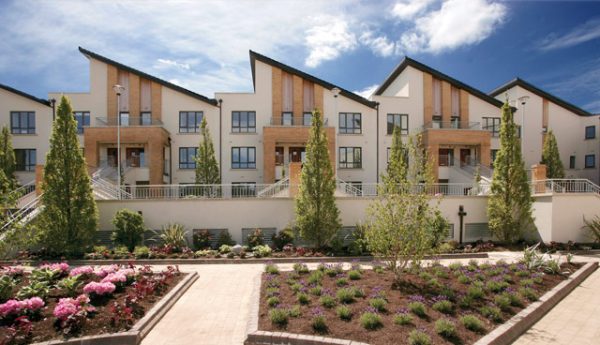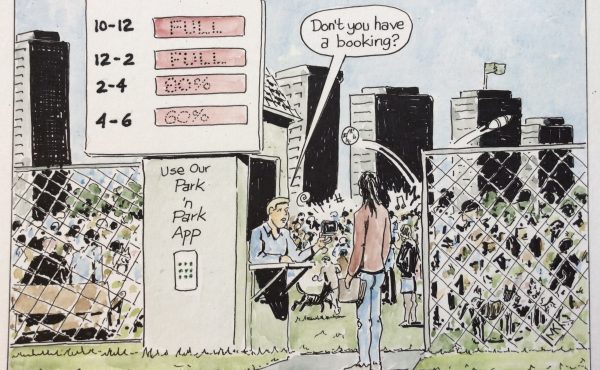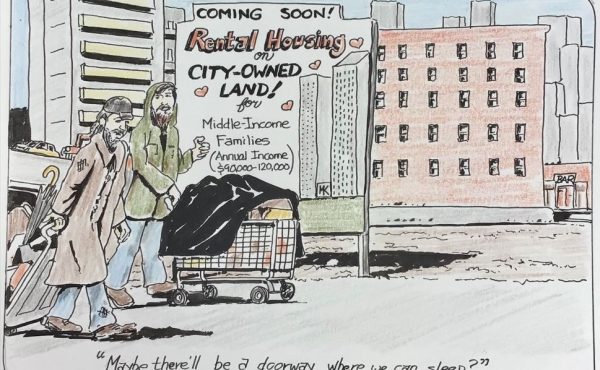
Municipalities routinely make land-use decisions that can impact a community’s long-term livability and sustainability. These decisions can also have implications on local government costs and finances, municipal budgets, and property taxes.
To better understand the costs and revenues associated with ‘urban’ vs. ‘sprawl’ forms of residential development in Metro Vancouver, the regional district recently completed a study exploring municipal infrastructure capital and operating expenditures for different residential densities.
Based on a literature review and informational interviews, case studies, and financial analyses, the study explores ways to allocate servicing costs for different housing typologies, while uncovering many methodological challenges to calculate precise results.
Explaining the Issue
Although urban planners—and increasingly the general public—are familiar with the concepts of urban sprawl and smart growth, precisely defining these densities or geographies and attributing cost on a per unit or per capita basis by housing form is less straightforward. ‘Urban sprawl’ refers to dispersed, single-use, auto-oriented, urban-fringe forms of development, while ‘Smart Growth’ comprises more compact, mixed-use, multi-modal forms.
Residential density can be measured as units per hectare or units per acre, and reflected in many different building forms, be it houses, townhouses, or apartments. Over the lifecycle of infrastructure (in some cases ~100 years), the operation, maintenance, and repair costs of public facilities are often comparable to their initial capital costs.
More compact development forms tend to reduce infrastructure costs, support more efficient use of resources, and encourage more sustainable forms of transportation, like walking, biking, and transit. The relationships between residential densities and infrastructure costs are complex. Some, but not all, services are sensitive to a city’s urban form, development patterns, and residential densities. Most of these infrastructure costs are initially borne by the developer and ultimately the resident, while operating costs are typically the responsibility of the municipality and ultimately taxpayers. As a result, lower infrastructure costs can—under certain circumstances—help contribute to lower housing costs.
Varying Jurisdictions
Infrastructures and facilities are required for a community and must be provided, even if not all are revenue-positive or neutral from a municipal finance perspective. Some ‘local’ services may be provided by other local or regional agencies, such as public transit and schools, and some infrastructure costs may be funded or cost-shared by senior levels of government—such as capital grants for rapid transit and treatment plants—further complicating the analysis. Large-scale regional infrastructure is also connected to municipalities, which convey services via local infrastructure to individual properties.
Budgets—Allocating Expenditures
Separating and allocating expenditures is not so simple or consistent. There are theoretical and ideal policies on one hand, and what typically occurs in practice on the other. The differences (and similarities) between a tax and a user fee—noting some items may not be properly classified—can also confuse the matter.
Total costs by service category are generally tracked and reported by municipalities for their entire jurisdiction, but it is difficult to disaggregate and assign to sub-areas and by unit types to determine actual costs by urban form. There are different catchment areas for different services with different attributes. The results can be further influenced by the city’s tax base — the amount of residential and non-residential uses and taxpayers, such as commercial and industrial users.
In some cases, a service can have both a fixed and a variable aspect, each with different cost profiles. The cost of producing and delivering a service can be very different, with only the latter varying by its location within a municipality (e.g., a water treatment plant for the entire city, with water mains to local properties). Regional infrastructure facilities may be less impacted by development density than local service infrastructure connections. Therefore, the cost implications of different densities may vary by type, function, scale, and authority.
Contextual Considerations
Some municipal and related services and costs are a function of per capita demand, while others are a function of location or density. Higher population municipalities—not necessarily high development densities—tend to achieve economies of scale to a certain point before becoming less efficient.
Beyond residential densities and types, the service delivery costs may vary by location and context due to such things as topography, geography, street pattern, and the capacity of existing infrastructure. Historic downtown cores tend to have older infrastructure, and thus are more expensive to maintain, whereas more recently developed suburban areas have newer infrastructure that does not require as much short-term maintenance.
Major infrastructure facilities that are large and expensive are generally constructed and financed all at once, referred to as ‘lumpy’ investments. Given the indivisible nature of major infrastructure capital assets/projects, municipal service capacity cannot be expanded incrementally to match the gradual increase in demand that comes from new development. In some cases, creating extra capacity may have been done for planned development and growth; but that initial excess capacity needs to be funded upfront for future users.
The redevelopment of areas that were not initially planned to accommodate higher densities, such as urban infill/intensification areas, can be a challenge and more expensive to service if the required infrastructure capacity is not present. This may necessitate extensively upgrading and expanding existing infrastructure before it would otherwise need to be replaced due to age.
Costs—Some One Has to Pay
Development Cost Charges (DCCs) in British Columbia are enabled under provincial legislation to pay for new or expanded infrastructure necessary to service the demands of growth.
Most infrastructure is typically funded by developers in the form of installing on-site civil works and paying DCCs for off-site works. The perpetual ongoing operating and maintenance costs of infrastructure become the responsibility of the municipality, funded by property taxes/utility fees. Capital infrastructure costs are one-time charges and, unlike variable user fees, do not influence consumption decisions in the same way as metered charges for utilities.
The on-site infrastructure costs for house vs. apartment developments are approximately five times more expensive on a per capita basis ($13,000 vs. $2,000) and nine times more expensive on a per unit basis ($40,000 vs. $5,000). This illustrates the cost-effectiveness of higher density and multi-unit residential forms as compared to lower density, single-detached because the infrastructure costs can be apportioned to more units.
Municipal DCC rates vary by unit type and are almost always highest for single-detached houses (up to $60,000), lowest for apartment units (approximately $10,000), and in between for townhouses. However, when adjusted for the typical number of residents in a household—which varies by unit type—the per capita DCC rates vary much less (averaging $10,000), indicating a greater alignment with household size rather than housing type.
While allowable under the legislation, most municipalities do not charge different DCC rates for different sub-areas or catchment areas. Municipal DCCs are typically applied at a municipal-wide rate as it is administratively simpler and provides more flexibility, rather than having to limit infrastructure expenditures to individual revenue-generating geographies. While infill and intensification development may have lower infrastructure costs, they generally do not have lower municipal DCCs. This suggests that DCC rates may not be set correctly if they are the same for the entire municipality despite variances in infrastructure needs. (Note that new provisional legislation will allow municipalities to enhance their DCC programs.)
Revenues—Taxes and Fees
While property taxes fund general municipal services and are calculated on assessed property values, a user fee—like those for utilities—is a charge for consuming a municipally-provided service.
User fees are a ‘cost-recovery revenue tool’ and must be set based on the costs of providing the good or service to the user. Per unit costs are generally higher for suburban residential forms compared to the urban areas, while revenues are not necessarily commensurably higher. The objective in setting user fees should be the establishment of a clear link between services rendered and services paid for.
In BC, typically about half of the property taxes collected go to other levels of government than the local municipality, including the Province and other agencies. Municipal utility fees such as water, sewage, and garbage, also apply.
Based on a review of municipal budgets in the Metro Vancouver region, approximately one-third of expenditures (i.e. both capital and operating costs) are related to utilities/engineering services that could be impacted to some degree by land uses, development forms, and densities.
Results May Vary
More compact development forms tend to reduce infrastructure costs on a per capita basis. Yet most of the municipal operating budgets are for labour-intensive services and therefore do not vary much due to geography or development densities/forms compared to other services, such as linear infrastructure.
Research shows that as residential density increases, municipal costs per residential unit decrease for roads, and water and sewage pipes. Stormwater management costs are more directly relevant to building site coverage and impervious surface than development density or population. Costs like community parks, recreational facilities, libraries, licensing/permitting, police, fire, and government administration, are largely a function of the growth of a population, rather than the density of development.
Some costs increase in higher density, established areas due to ‘urban harshness’, such as higher land costs and more complex and time-consuming construction works. While absolute infrastructure costs may be higher in urban areas, it tends to support more intense development accommodating a greater population, resulting in lower per unit and per capita costs.
Often there are economies of scale associated with capital-intensive infrastructure (e.g., water and sewage treatment plants), but not for labour-intensive services (i.e. libraries, recreation centres, etc.). Thus, there is no single optimum level for all combined municipal services.
What Does It Mean and What To Do?
Here are 10 considerations for reviewing property tax and utility fee policies, land use and transportation planning, and infrastructure investments, to support efficient residential uses, densities, and forms.
Municipal property taxes and utility fees
- Price the costs of services and charge those who benefit – A solution to a misalignment of resources leading to urban sprawl is to properly allocate costs and benefits to encourage more efficient and sustainable development forms.
- Wherever reasonably possible, consider utility fees rather than property taxes – As they are more reflective of the actual cost of service consumption and delivery. Expand the use of metering for utilities, such as for water, sewerage, and garbage collection.
- Utility fees should not be focused simply on raising revenues – They should emphasize changing behaviours and outcomes. For increases in municipal utility fees, consider offsetting reductions in property taxes.
Advance cost-effective residential development
- Remove regulatory and financial barriers to urban densification in appropriate locations, such as urban centres – Allow and facilitate higher density development in urban areas (i.e. infill, intensification, redevelopment), where appropriate, and where capacity exists and infrastructure investments can be best utilized. Discourage developments that are not compact form, and that cannot be cost-efficiently serviced, such as through an urban containment boundary.
- Recognize that achieving compact, complete communities does not necessarily require extremely high-density development – For example, simply moving from low-density to medium-densities in urban centres and transit corridors can provide significant efficiencies in infrastructure servicing cost outcomes.
- Apply Development Cost Charges that vary by residential unit type/size/density as well as sub-area geography – To better reflect the actual servicing demands and costs.
- Transparently illustrate and explain infrastructure/servicing costs and trade-offs when multiple scenarios are being considered for a proposed development or redevelopment – When preparing a new land use plan or evaluating a major development, closely integrate land use, infrastructure, and financial analysis, and clearly explain the implications on municipal budgeting and property taxes.
- Better estimate and communicate the financial and other benefits of compact, complete development, mixed-use, walkable, and transit-oriented communities to municipal councils and residents – Both through technical analysis for informed audiences and summary graphics for the general public, clearly illustrate the financial as well as environment and social benefits of well-planned development to the residents and the municipality.
Differences between theory and practice
- There are often some unintended imperfections and forms of cross-subsidization of municipal infrastructure and services – Some cost and revenue items are very difficult to precisely determine, allocate, and track, and involve a high administrative burden and complexities.
- Direct efforts towards items that matter the most with the greatest opportunity for improvement – Focus on the subset of costs that are most impacted by spatial and development density factors.
Closing
Closely coordinating and integrating land use and transportation planning, infrastructure servicing, and asset management in municipal decision-making can lead to improved outcomes. While there are potential municipal cost savings associated with more compact forms of development, the scale of this amount should be considered within an overall municipal budget context. Coordinated infrastructure servicing will be an increasingly complex matter with new provincial legislation permitting high rises by SkyTrain stations and up to six housing units on house lots.
Understanding and communicating the trade-offs associated with the costs and revenues of different land use types and residential densities/forms is critical to long-term financial sustainability for advancing positive community building.
Note: A different version of this article is published in Planning West 2024 Winter Edition, the Planning Institute of British Columbia’s quarterly magazine.
***
Reference links and other useful resources:
- Metro Vancouver Study: Costs of Providing Infrastructure and Services to Different Residential Densities (2023). https://metrovancouver.org/services/regional-planning/Documents/costs-of-providing-infrastructure-and-services-to-different-residential-densities.pdf
- BC Ministry of Community Services: Development Cost Charges Best Practices Guide (2005)
- City of Vancouver Video: An Introduction to Development Cost Levies
- The Province of British Columbia: Development Finance
**
Eric Aderneck, RPP, MPL, BCOM, DULE (eric@aderneck.ca) — Over the past two decades, his diverse experience includes working for the public and private sectors in the Metro Vancouver region through several different capacities including planning policy, real estate development, consultant, and instructor. His expertise is in industrial and employment land use planning and development matters, including documenting the supply, demand, utilization, intensification, and stratification of industrial lands and office development patterns and trends. www.linkedin.com/in/ericaderneck




